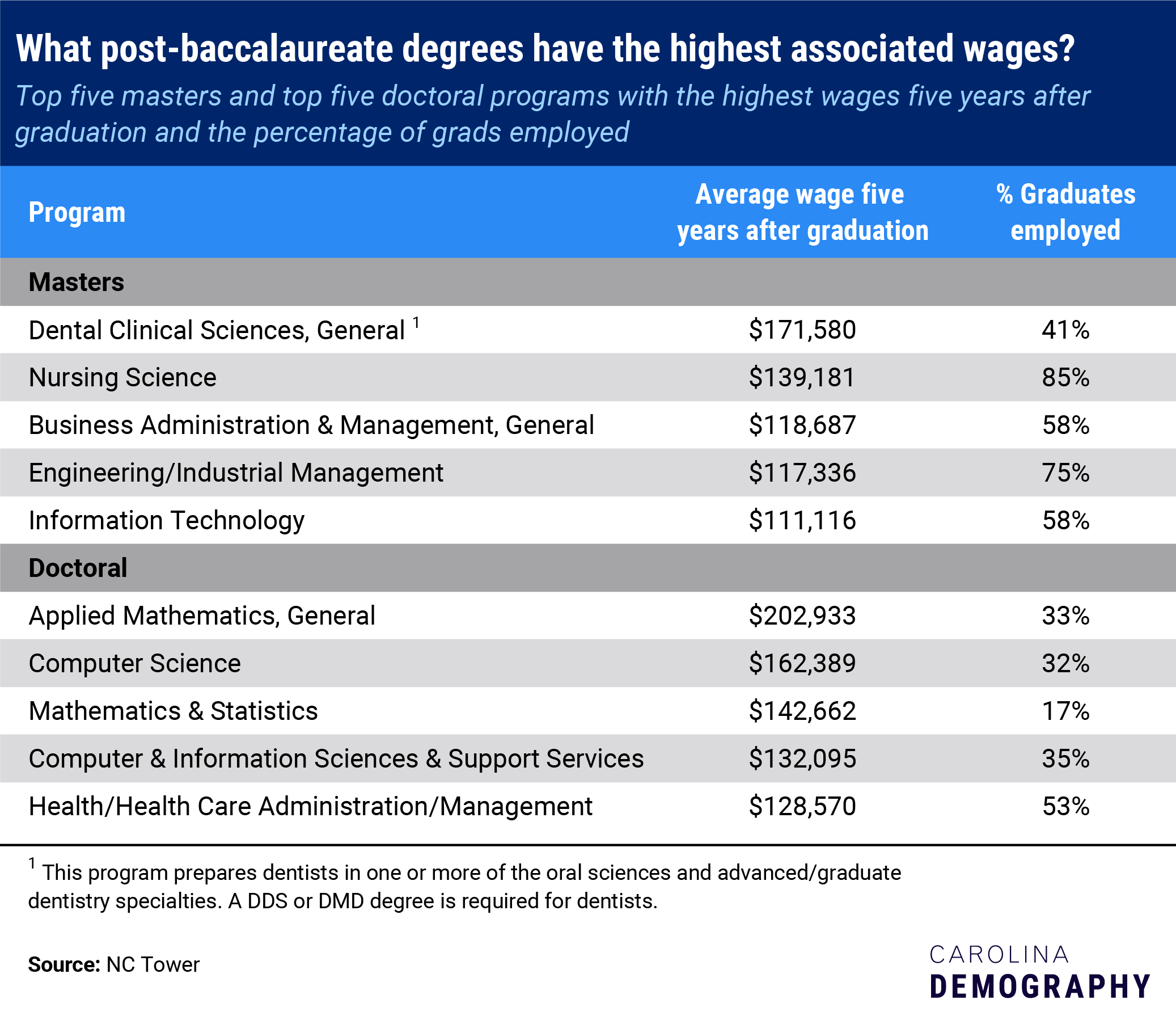What UNC system graduate degrees have the highest associated wages?

This is a continuation in our series looking at wages after graduation. Previous entries in the series include Degrees and credentials with the highest growth in wages, Highest average wages for UNC system graduates, and highest average wages for NCCC graduates.
The question of whether to pursue a degree or credential after completing an undergraduate degree is one that students across the US are considering more than ever before. According to the National Center for Education Statistics Condition of Education report, between 2000 and 2017, enrollment in a graduate program [1] increased by 39%. Additionally, the report concludes by foreshadowing an increase in graduate enrollment: By 2028, the number of students who pursue a degree after obtaining a 4-year degree will increase from 3 million to 3.1 million. Given the trend and expected increase, we want to highlight those programs where UNC graduates make the highest mean salaries among their graduate cohort.
We conducted this analysis using the NC Tower database, maintained by the NC Department of Commerce, which provides aggregate information (i.e., programs of study, degrees attained, and wage/employment information) on students who attended the UNC system. Specifically, we used 2012 UNC system graduates’ wage and employment data five years AFTER graduating with a postbaccalaureate credential. Analysis revealed the top five masters and top five doctoral programs in terms of average salary five years after graduation, as well as the percentage of graduates who are employed for each. It is important to note that the Tower database only includes graduates who remain in North Carolina after graduation; those that left the state and are or are not employed elsewhere are not included.

Overall, the highest average wages five years after graduation went to doctoral program graduates in technology, math, and healthcare. The highest average wages five years after graduation were slightly lower for masters degree recipients, but again centered on healthcare and technology, as well as math. The percent of doctoral program graduates employed ranged from 17% to 53%, whereas the percentage of masters program graduates employed ranged from 41% to 85%.
[1] Graduate programs include master’s and doctoral degree programs, as well as professional doctoral programs such as medicine, law, and dentistry.
Need help understanding population change and its impacts on your community or business? Carolina Demography offers demographic research tailored to your needs.
Contact us today for a free initial consultation.
Contact UsCategories: Education, NC in Focus

The Center for Women’s Health Research (CWHR) at the University of North Carolina School of Medicine released the 12th edition of our North Carolina Women’s Health Report Card on May 9, 2022. This document is a progress report on the…

Dr. Krista Perreira is a health economist who studies disparities in health, education, and economic well-being. In collaboration with the Urban Institute, she recently co-led a study funded by the Kate B. Reynolds Foundation to study barriers to access to…

Our material helped the NC Local News Lab Fund better understand and then prioritize their funding to better serve existing and future grant recipients in North Carolina. The North Carolina Local News Lab Fund was established in 2017 to strengthen…
Your support is critical to our mission of measuring, understanding, and predicting population change and its impact. Donate to Carolina Demography today.